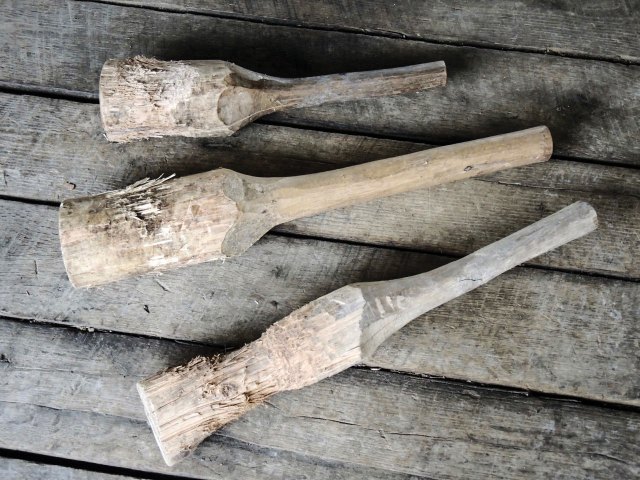
Wendell picked up a maul, which Meb had made from a hickory tree. It had a smooth handle and a bulbous head, squared off at the end. “With it,” he told me, “you can deliver a blow of tremendous force to a stake or a splitting wedge.” Thinking about a modern sledgehammer, I asked how the handle was inserted into the head. He put his hand on my shoulder and said, “No, no, honey,” then hastily explained himself: “That’s our way of taking the sting out of it, you see, when we correct someone.” He showed me the swirling grain of the maul’s head, chopped from the roots of a tree, and swung it over his shoulder to demonstrate how it becomes a natural extension of the body.
When I was back home, he sent me a diagram and explained how the strength of the wood came from the tree’s immersion in the soil: “The growth of roots makes the grain gnarly, gnurly, snurly: unsplittable.” After you cut the tree, you square off the root end. Then, above the roots, where the grain isn’t snurly, you saw inward a little at a time, “splitting off long, straight splinters to reduce the log to the diameter of a handle comfortable to hold. And so you’ve made your maul. It is all one piece, impossible for the strongest man (or of course woman) to break.” He scrawled at the bottom of the page, “There is a kind of genius in that maul, that belongs to a placed people: to make of what is at hand a fine, durable tool at the cost only of skill and work.”
— “Wendell Berry’s Advice for a Cataclysmic Age,” The New Yorker, Feb. 28, 2022, by Dorothy Wickenden